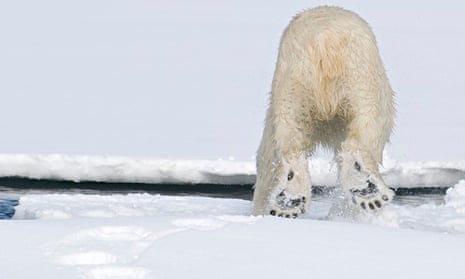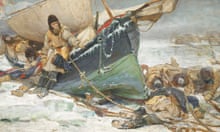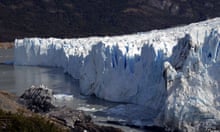Trace DNA samples recovered from footprints in the Arctic snow have been used to reveal the bloody killing of a seal by a polar bear, which was joined by seagulls in devouring the corpse. It is the first time that genetic material from animals has been recovered from footprints, and the CSI-style technique is expected to prove a valuable tool in tracking the plight of endangered species. The method is cheaper, easier and crucially far less invasive than existing approaches which can involve capturing and anaesthetising wild animals.
A WWF expedition on Norway’s Svalbard islands high in the Arctic circle collected the snow in 10 footprints from one set of tracks made by a female polar bear. In the laboratory, the snow was melted and then filtered to collect skin cells from the tracks. The DNA in the cells was multiplied, allowing the identification of the animals and the reconstruction of the grisly scene.
“Probably the bear was eating the seal and there was then some blood on her footprints,” said Dr Eva Bellemain, project leader at Spygen, the company that has pioneered this new DNA analysis. “The gull was probably also feeding on the seal and may have defecated at the site. This footprint tells the whole story.”
The scientists are now finding molecular markers in the DNA which will allow them to identify individual bears. “We will be able to see how they use their territories and how they are related to one another,” Bellemain said. Just a single cell would be enough to give a result, she said.
Spygen, founded by molecular ecologists from the University of Grenoble, is using similar techniques to analyse other water samples to identify which fish and frogs are present in lakes and seas. “The gene can be a spy for us in finding the species from the samples,” said Bellemain.
The new footprint technique is to be used on other polar bear tracks from Canada and to track snow leopards elsewhere. DNA has been retrieved once before from a brown bear track, but the results have yet to be published. The scientists also hope to extend its use to footprints in mud. At this early stage, the scientists do not know how fresh the footprints must be to preserve DNA but other work on animal droppings shows that genetic material can resist degradation for six months in cold conditions.
“This method would be an invaluable tool for conservation biology,” says Arnaud Lyet of WWF. “At present, researchers use expensive, invasive techniques to track the population size and health of wildlife such as polar bears. Using footprint DNA, we could dramatically cut the investment required, so monitoring populations could be done more easily.” The Arctic is hostile, remote and rapidly changing, making it particularly challenging to get reliable information on polar bear populations, he said.
Polar bear numbers in key regions have been shown to be declining, but in many areas data is too scarce to know. Currently there are thought to be no more than 25,000 polar bears. In May, scientists at the Norwegian Polar Institute told the Guardian that the proportion of polar bear females in Svalbard giving birth to cubs crashed to just 10% in 2014, following a series of warm years and poor sea ice.










Comments (…)
Sign in or create your Guardian account to join the discussion